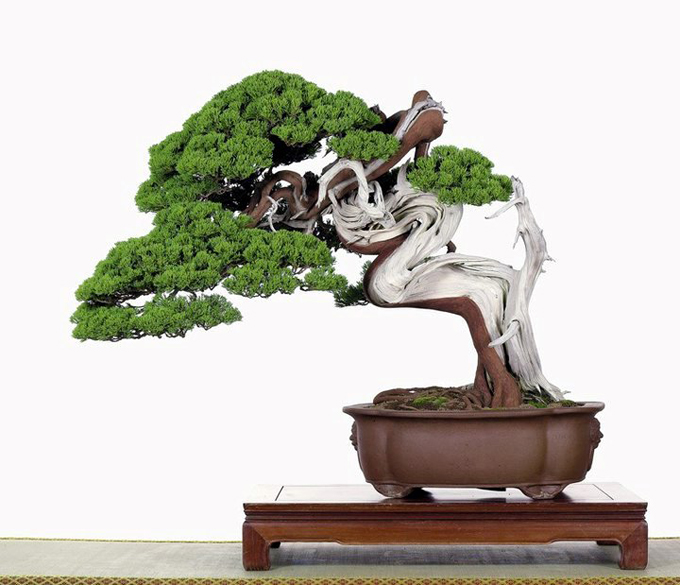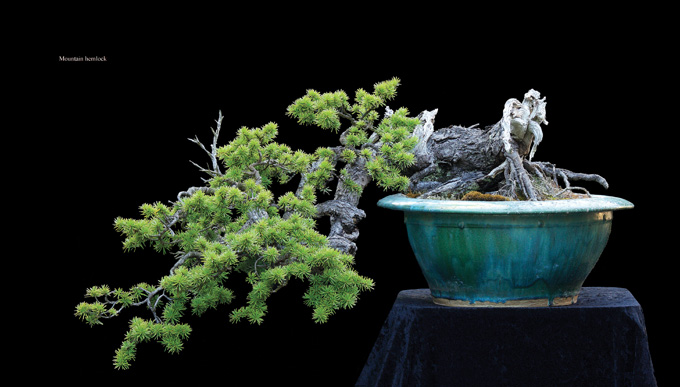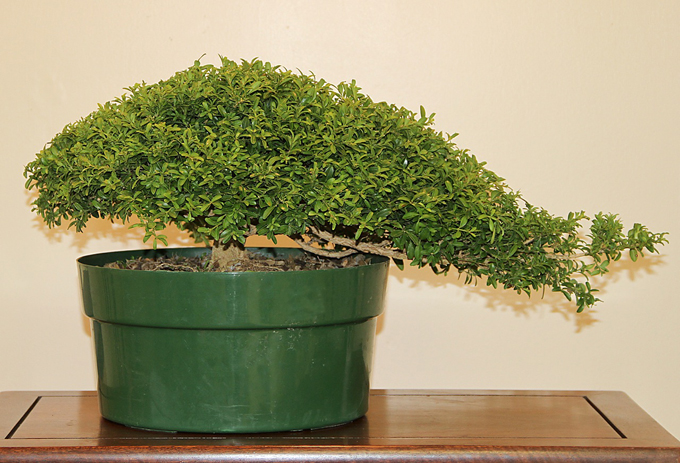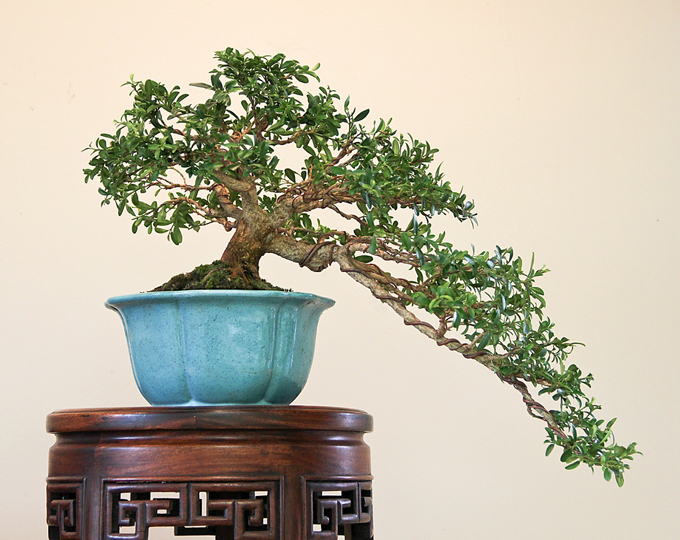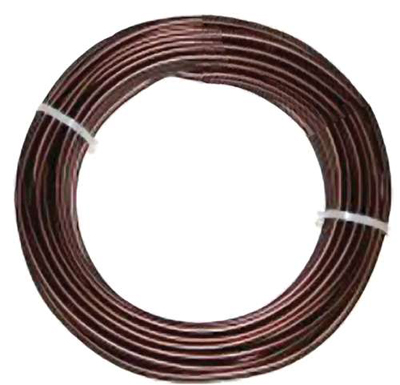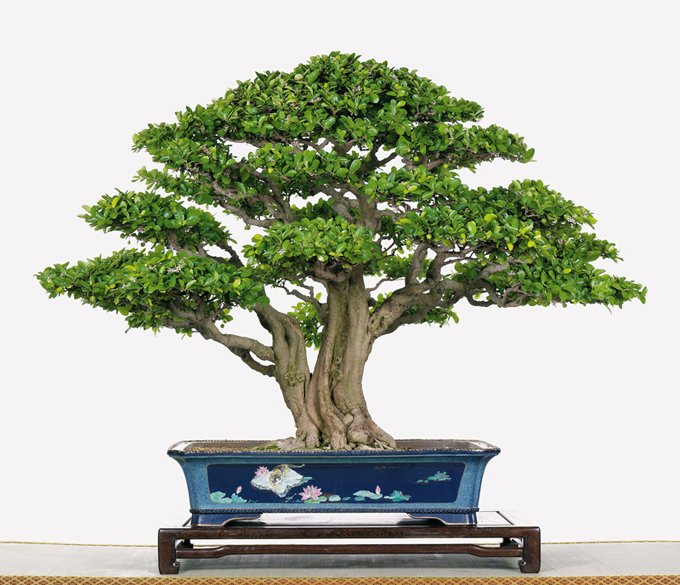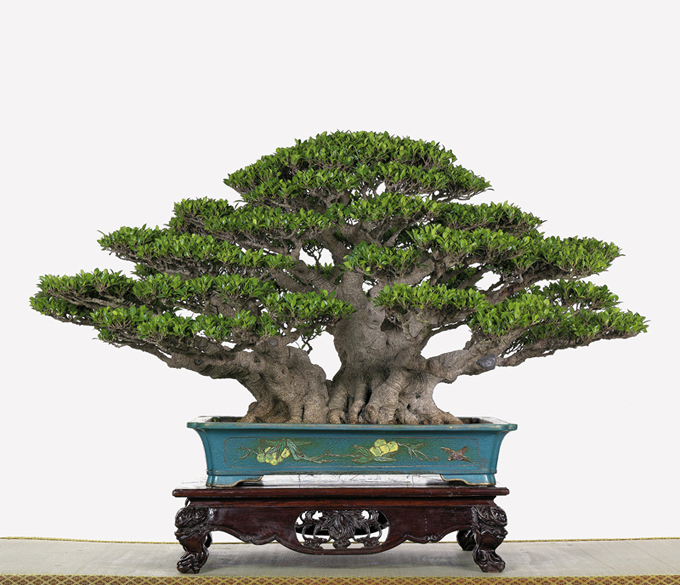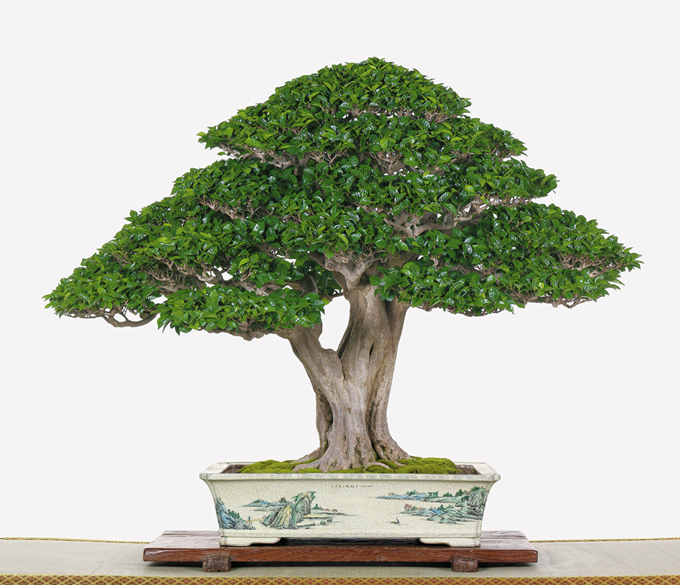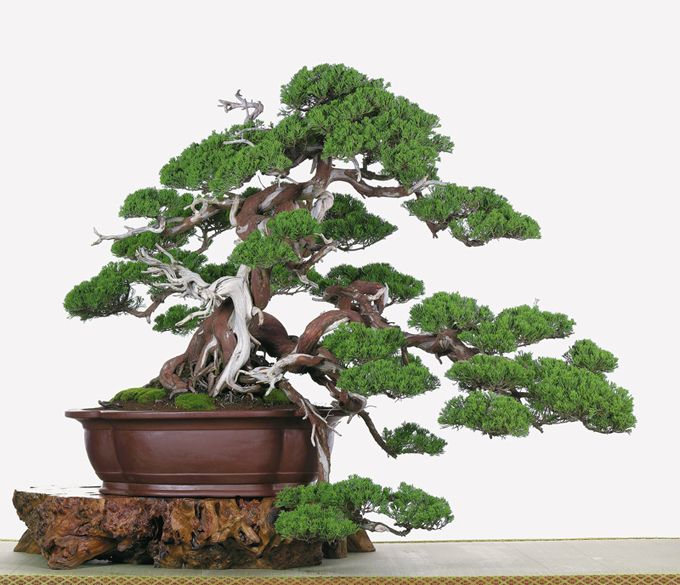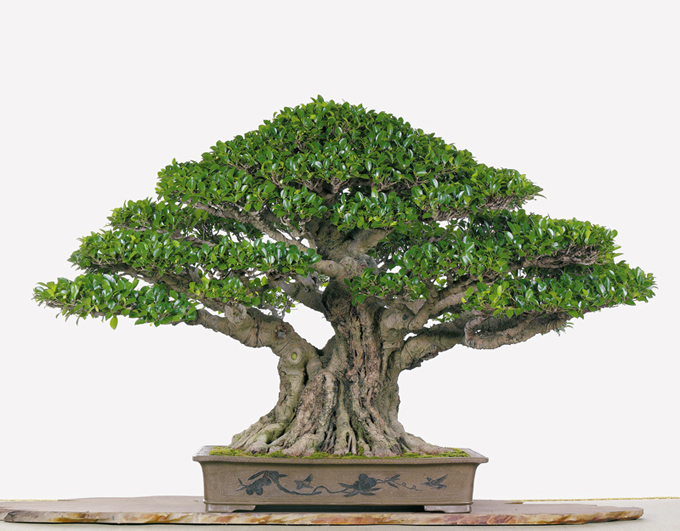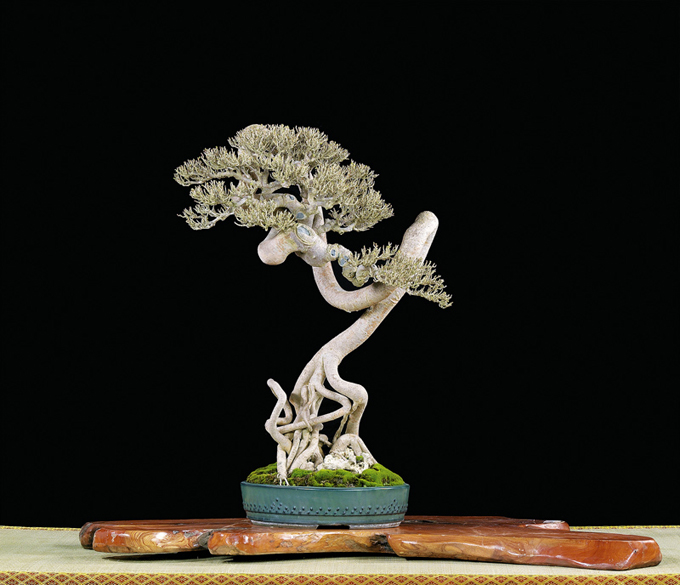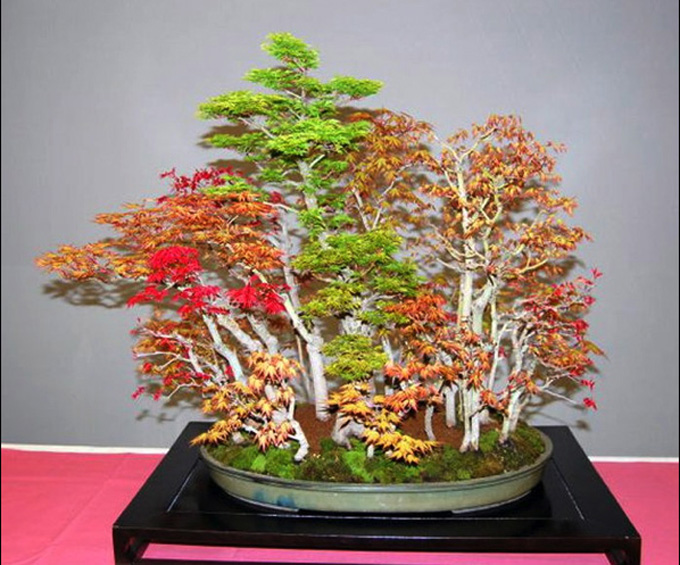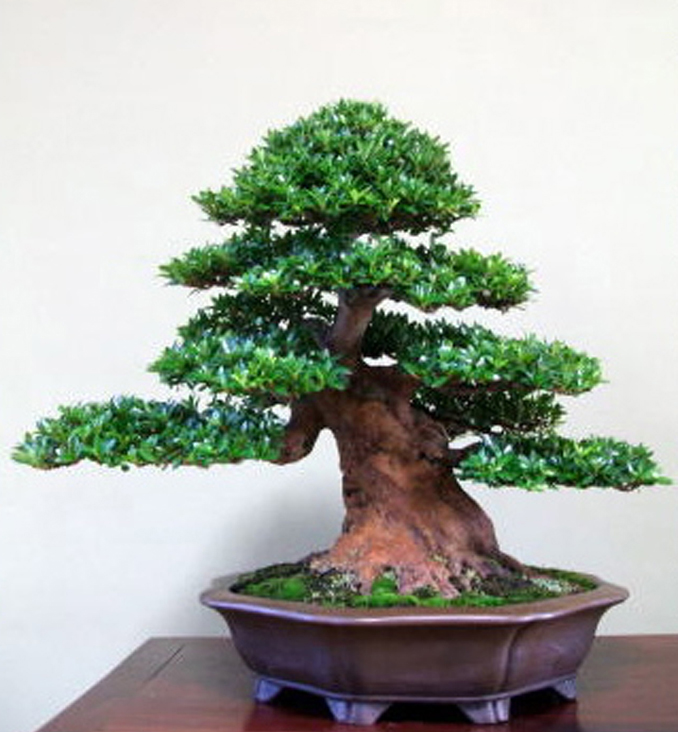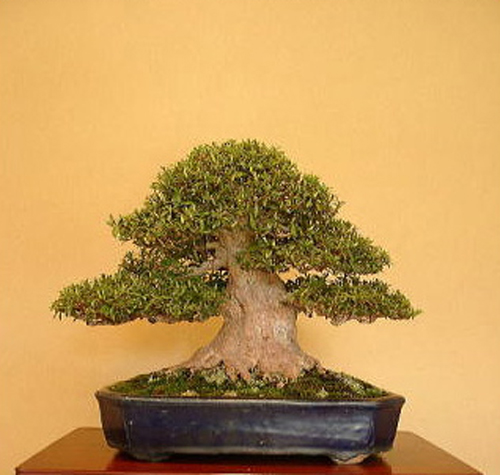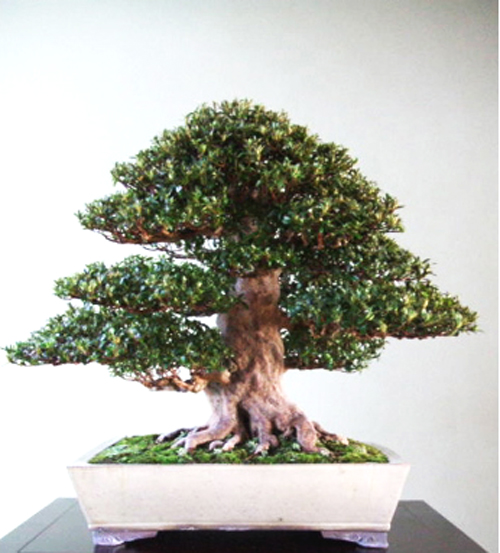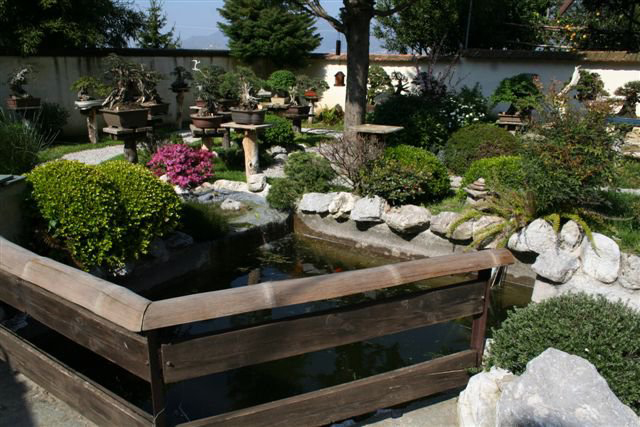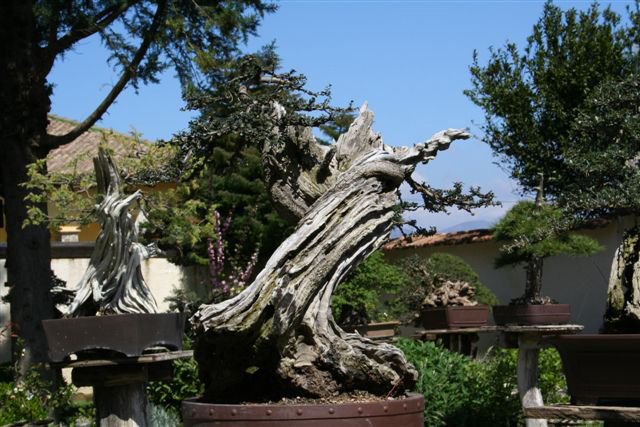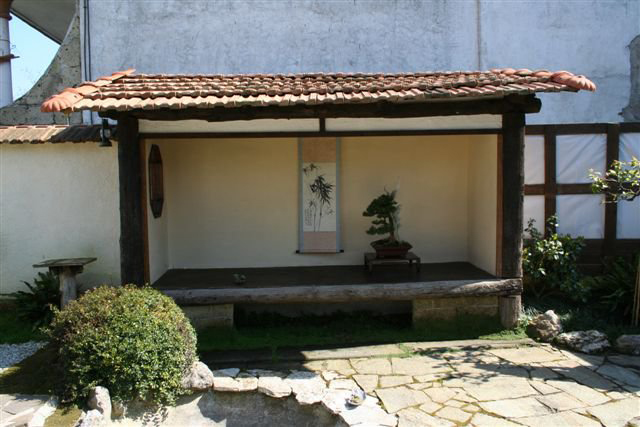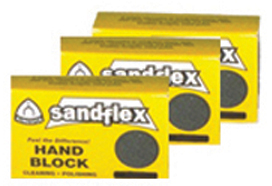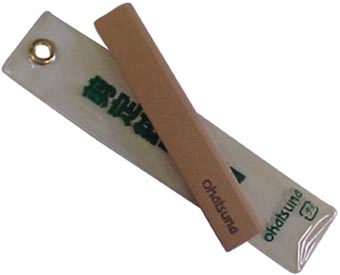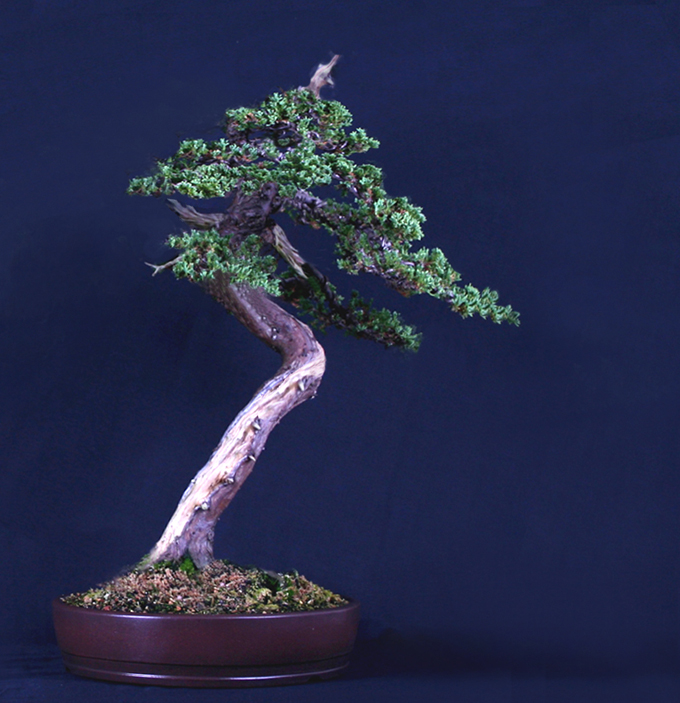 Robert Steven’s simulation of a juniper that was submitted by Peter Woosley. Peter’s original is below.
Robert Steven’s simulation of a juniper that was submitted by Peter Woosley. Peter’s original is below.
A surprising shift
Robert fooled me (once again). At a glance I thought the tree had potential more or less as it was. All it needed was perhaps a little lean to the right, some work on the crown and that heavy upper section of trunk (where the first branches come off), and especially on the somewhat stiff feeling branch on the lower left that caused the whole tree to seem unbalanced. However, Robert saw things differently and ended up with a much more interesting outcome (though I would still like to see that thick upper section of trunk hidden or reduced a bit).
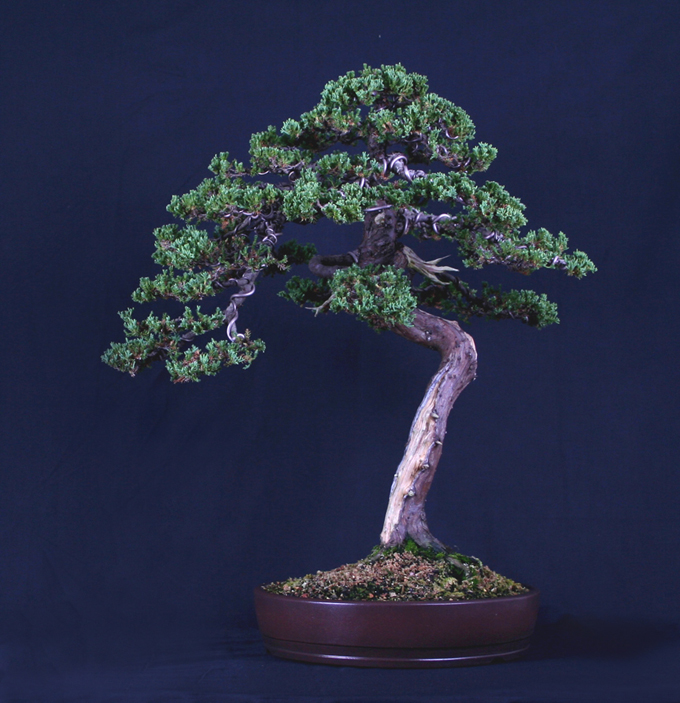 Peter Woosley’s original.
Peter Woosley’s original.
Robert Steven’s critique
This tree looks young and there is also a visual balance issue. The canopy is too big which gives an overweight feeling to the top of the tree. Also, the side branch on the left that points downward disturbs the visual flow. Overall, the tree seems unbalanced and the form of the round canopy does not fit to the character of the trunk line (you can read my book Vision of My Soul to learn more about the character of line and form).
I would suggest a total restyling. The main objective is to explore the character of the tree based on the dynamic trunk line. In order to emphasize this dynamic flow, I would change the tree’s movement from the left to the right, by repositioning the the tree in the pot and leaning the trunk slightly to the right. I would also shorten all the branches on the left side, and extend the flow to the right.
In order to make the tree look older, I would shorten the crown and turn the apex into small jin, and reform the foliage to an irregular form that fits the character of the casual trunk line.
Last but not least, I would continue the shari to the right (I see a cut there), then continue from the back to the branch on the left. By doing so, the trunk movement is improved and the tree looks older with more charm.
General comments
There is more than one way to design any bonsai and my critiques and recommended solutions might not always fit your taste and personal preferences, but I always try to give my opinion based on artistic and horticultural principles.
To understand my concepts better, please read my books Vision of My Soul and Mission of Transformation which are available at Stone Lantern.
You can also visit my bonsai blog.
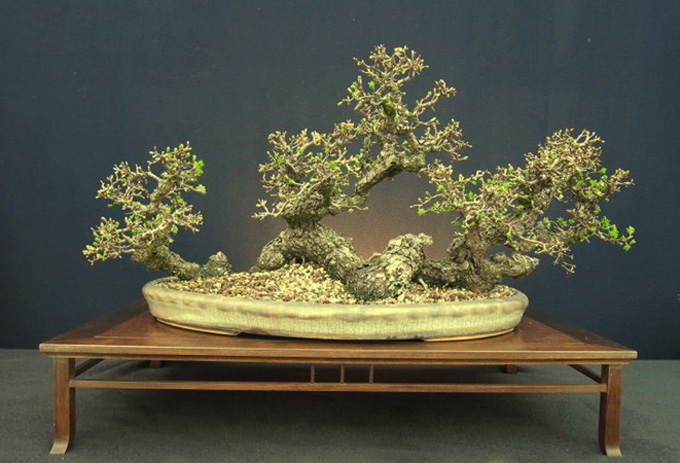 Crataegus raft by John Pit. Wow. What a unique and compelling bonsai. A true sinuous raft style planting. You don’t see too many of these and I’ve never seen one quite like this. Great pot too. John Pitt is a well known English potter, so I imagine he made the pot as well as the planting.
Crataegus raft by John Pit. Wow. What a unique and compelling bonsai. A true sinuous raft style planting. You don’t see too many of these and I’ve never seen one quite like this. Great pot too. John Pitt is a well known English potter, so I imagine he made the pot as well as the planting. 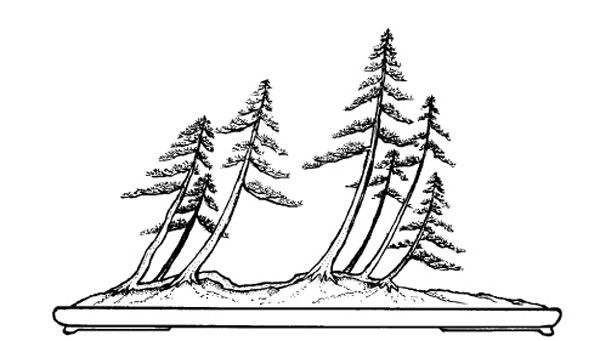 This drawing is from an article on raft style bonsai on Bonsai Culture Group Malta. I just discovered this site, and haven’t had time to explore it, but on the surface, it looks quite good with a wealth of bonsai information.
This drawing is from an article on raft style bonsai on Bonsai Culture Group Malta. I just discovered this site, and haven’t had time to explore it, but on the surface, it looks quite good with a wealth of bonsai information. 